Research in an unfamiliar environment is difficult. Add to that 80%+ humidity (a situation where nothing will ever dry), incompatible and unavailable materials, daily chaos, and unseasonably heavy rains and you’ve got a recipe for failure. In my supreme hubris I pressed forward undeterred by those factors beyond my control.
The specifics of my heartbreaking defeat and the struggles leading up to it will become clear later in my tale. For now, we have to talk about bugs. Soil associated macro-invertebrates (hence forth referred to as inverts) to be specific. These are fancy science words that mean: They live on the forest floor, they are big enough to see, and don’t have an internal skeleton.
Critters like the pill millipede pictured below exist continuously within a micro habitat for their entire life, experiencing all the stresses, changes and modifications within their ecosystem. As such, examining invert populations will give us information on the cumulative effects of environmental change over time.
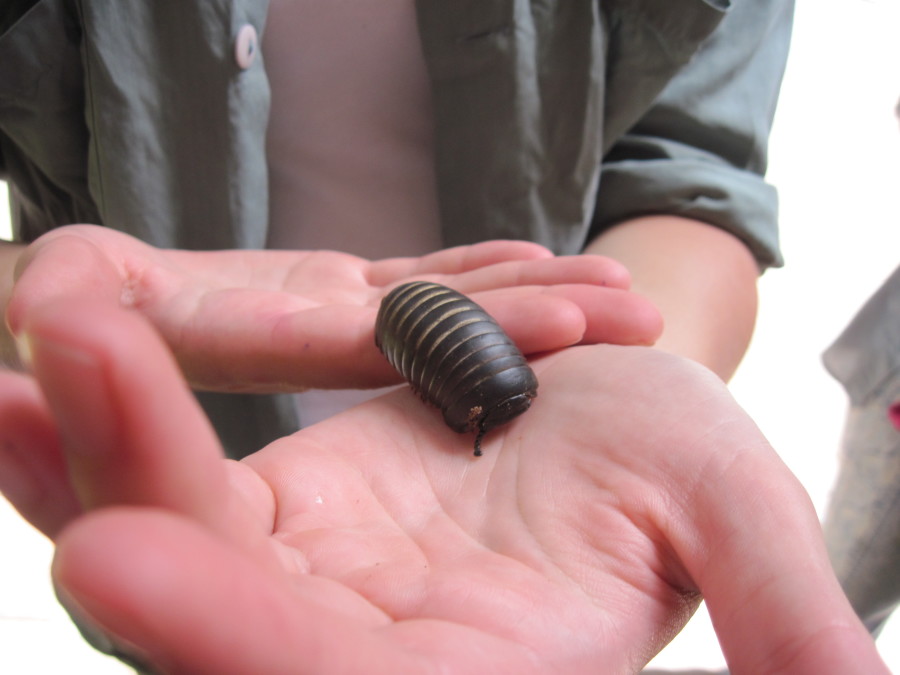
With a basic understanding of the various responses different communities have to stressors, inverts can serve as good long-term indicators of ecosystem health. Which makes them an excellent candidate for monitoring the success of restoration, allowing us to focus on biological responses to environmental impacts that can then target restoration practices and inform management decisions.
Amazing right!?
All that information crammed into their tiny bodies. But how do we EXTRACT it?
ENTER:

Artistic interpretation of an actual photograph of a much respected scientist.
Despite his methods being ancient (first developed in 1905). The Berlese funnel is still a popular and effective method for extracting invertebrates within soil/ Leaf litter samples.
The process goes a little something like this:
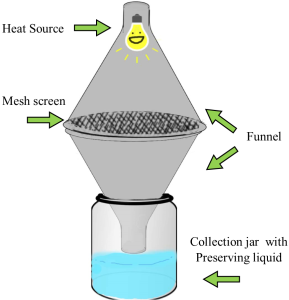
Place leaf litter/soil sample into bottom funnel on-top the mesh screen which is sometimes not included and I foolishly left out of the first iteration of my funnels.
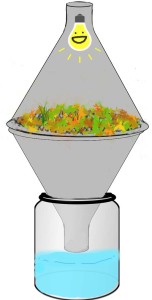
Wait at 24-48 hours… however long is required to dry out the sample.
![]()
The inverts living in the litter/soil will move away from the heat and fall through the mesh and into the collection jar.
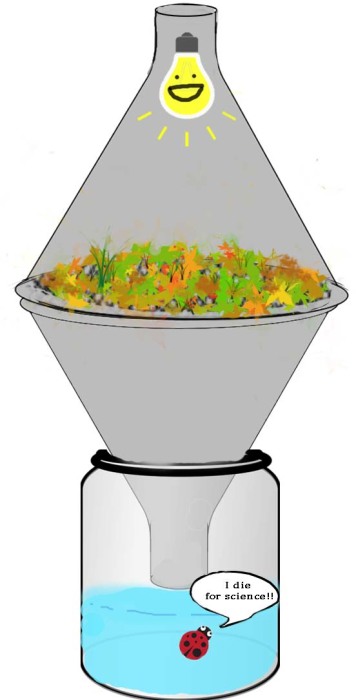
Not only can this method provide you with a high volume and diversity of invert Species it has all the hallmarks of a successful citizen science project!
- Low tech
- High value information
- Educational opportunities galore
- Inexpensive
- Fun for the whole family
- Charismatic fauna
- Does not require taxonomic expertise
I arrived hopeful, and in theory, prepared.
But, the jungle cares not for my scientific optimism.
The Trouble begins
Finding ethyl alcohol or my preferred method for terrestrial invert murder, ethyl acetate (the main ingredient in non-acetone nail polish remover) proved difficult.
These Items so common place in the United States were nowhere to be found even in a store with an entire wall of different types of toothpaste and hundreds of slightly off versions of every kind of snack food imaginable.

Eventually I was able to procure something similar to isopropyl alcohol hiding in the back of a pharmacy.

Upon returning to the village I began assembling and preparing the necessary supplies, the project occupying every spare moment and all of my thoughts. I sewed collection bags from sturdy stretchy vinyl, obsessed over the proper arrangement of my funnels and spent hours marking important pages in my insect field guide.
I had brought two premade pieces of equipment with me that I couldn’t possibly imagine would cause me trouble:
- A 0.5m X 0.5m PVC quadrat to delineate my leaf litter sample size
- Desk lamps that would serve as the heat source in my Berlese funnel
what a fool I was!
Collection Day
On the day I was to collect my samples, the aforementioned PVC quadrat I had schlepped across the globe was nowhere to be found.
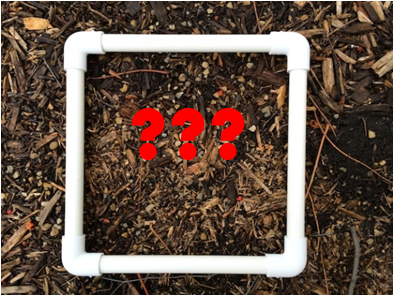
THAT’S OK!
The team got to work, Fikir (the restoration manager) collecting sturdy jungle sticks and Ruben (USF classmate) measuring and instructing me on a taping technique for sports injured knees. Together we were able to construct a serviceable facsimile.
SO, with our Jungle quadrat, my hand sewn collection bags, and the right attitude, we hiked into the forest to our first sampling site.

I was at peak enthusiasm, all of the hours of researching methods, taxonomic indicator species, and finding and, more often than not, building the correct equipment. It was all coalescing into a bright beautiful gem of science, thrilled to finally share the theory and practice of invert sampling.
Putting it all Together
Upon returning to our makeshift lab space I put together my extraction funnels and plugged in the small desk lamps. The light came on buzzing loudly and within a few moments crackled, popped and went dark.
. . .
You might be thinking. “Just get a new lamp!” Or “Why did you think old American desk lamps would work in a Malaysian power outlet don’t you know they output 240 volts instead of 120 volts, you dummy?”
Firstly, buying a new lamp was no easy task. Second, I did know that. Shut up.
I stepped outside. Cried a little. Thought about giving up, running into the jungle and starting a new life in the forest so I would not have to face the shameful sting of my own incompetence.
Ultimately I did none of these things.
I pressed forward with the help of the amazing KOPEL staff and even got to learn how to wire a lightbulb to a plug.
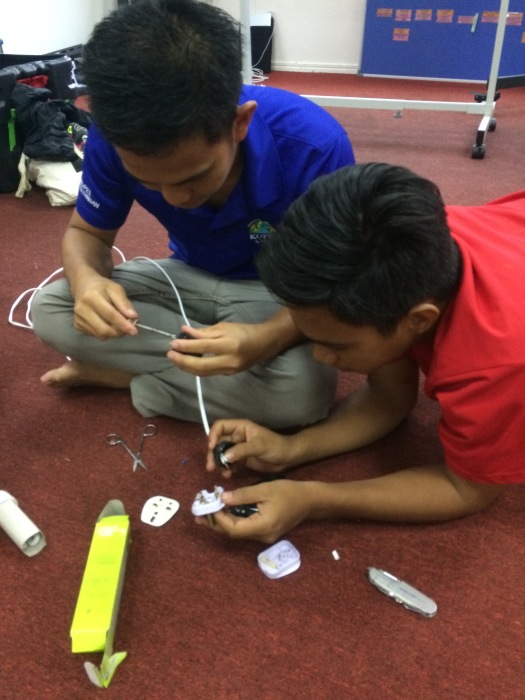
Eventually I was able to put these beautiful things together!
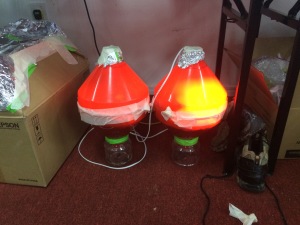
Unfortunately, even after all that, I waited 24, 48, and then nearly 72 hours and still nothing happened. It became apparent the leaves would s not dry giving the creatures living inside no motivation to move out of their home, if anything I just kept them warm and happy for a few days.
PRETTY ANTICLIMACTIC RIGHT?!
I am hesitant to call the whole thing a true and honest failure as I have left the bright enthusiastic KOPEL restoration team a method, equipment, and the potential for future study.
Though I lack biological data to show for all my efforts I was still able to obtain useful information to inform future study.
Here is what I learned:
- Make sure your sample is spread out enough that it will actually dry
- Don’t try to process more samples than you actually have full setups for
- The mesh layer which the leaf litter rests on is crucial in high moisture habitats
- Give yourself plenty of time for trial and error
- You can create powerful research tools with easily accessible items
The forest floor still has much to share and I have no intention of quitting before I’ve learned how to understand the messages of its inhabitants. For now, I return home, humbled, inspired, and more determined than ever.
– Sasha Lepeschkin-Noel
I pressed forward with the help of the amazing KOPEL staff and even got to learn how to wire a lightbulb to a plug.
